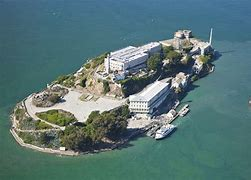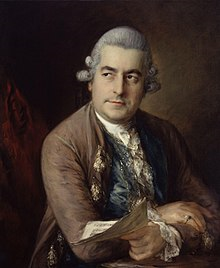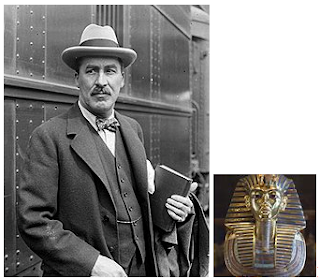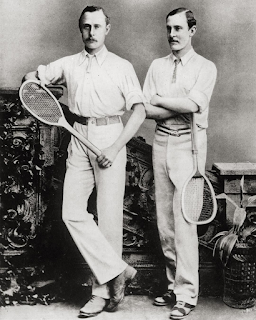January 1st - 9th
January
January, the
first month of the year, has 31 days and is named after the two-faced Roman
god, Janus.
 |
| Janus |
So, let looks
at some of the important dates of January.
If you share a birthday during January who might you share it with, and
also those people that died during the month of January.
1st January
Events
45 BC –
The Julian Calendar, the civil calendar of the Roman Empire,
establishing that 1st January was the date of a new year.
 |
| Contemporary portrait of Newton |
John Newton,
went to sea at a young age, where he worked on slave ships in the slave
trade. 1734, Newton, himself became a slave
of Princess Peye, having been rescued Newton, returned back to the sea,
becoming Captain of several slave ships.
Several years later, Newton, experienced a conversion to Christianity renounced
his trade and became a supporter of the abolitionism
Newton, was
ordinated as a Church of England clergyman where he served as a parish priest at
Olney, Buckinghamshire
William
Cowper, poet and hymnodist moved to Olney during 1767, and he worshiped Newton’s
church. Both men collaborated and
published a volume of hymns, 1779, titled Olney Hymns.
The volume
of work included “Glorious Things of Thee Are Spoken”, “How Sweet the
Name of Jesus Sounds!”, “Let Us Love, and Sing, and Wonder”, “Come,
My Soul, Thy Suit Prepare”, “Approach, My Soul, the Mercy-seat”, and
“Faith’s Review and Expectation”.
It is this hymn that is known by its opening phrase, “Amazing Grace”.
Amazing grace! How sweet the sound
That saved a wretch like me.
I once was lost, but now am found,
Was blind but now I see.
Shout, shout for glory,
Shout, shout aloud for glory;
Brother, sister, mourner,
All shout glory hallelujah
Newton
married his childhood sweetheart, Mary Catlett, during 1750 at St. Margaret’s
Church, Rochester. 1790, Mary died,
after her death, Newton, published Letters to a Wife, 1793, to express
his grief. Three months before his
death, Newton witness the prohibiting thew slave trade in the British Empire,
with the passing of the Slave Trade Act, 1807.
Newton, died December 1807, aged 82.
He was buried along his wife at the Church of St. Peter and Paul, Olney,
Buckinghamshire
1801 –
The United Kingdom of
Great Britain and Ireland is proclaimed, after the legislative of the union of Kingdom of Great Britain
and Kingdom of Ireland is completed.
1877 –
Queen Victoria is proclaimed Empress of India
Emperor of Empress
of India, was a title used by the British monarchs, dating from 1876 to 1948. Oaths of allegiances were made to the emperor/empress
by the governors-general, princes, governors and commissioners in India.
The title
was dropped in 1948, under the new Indian Independence Act, 1947.
1892 –
Ellis Island, New York begins processing
immigrants entering the United States
1923 – British Railways are grouped into Four Companies – LNER (London and Northern Eastern Railway); GWR (Great Western Railway); SR (Southern Railway) and LMR (London, Midland and South Railway)
 |
| Alcatraz Island, San Francisco Bay |
Alcatraz
Island located 1.25 miles offshore from San Francisco, California. It is reported to be 22 acres. The island was
developed with facilities for a lighthouse, a military fortification, a
military prison and a federal prison. Today,
the lighthouse, is the oldest operating lighthouse on the West Coast of the
United States.
Alcatraz
island first charted by the Spanish naval officer and explorer Juan Manuel de
Ayala during 1775. He named on the of the three islands as “La Isla de los Alcatraces”
translated as “The Island of the Gannets”
June 1846,
Julian Workman, was the private owner of the island having been given it by the
Mexican governor Pio Pico. Later that
year, the island was brought in the name of the United States government, for
$5,000 by John C. Fremont, leader of the Bear Flag Republic.
1859, the
island was used to house soldier guilty of crimes, and during the American Civil
War, prisoners of war, were housed here.
 |
| Al Capone |
1933, the United States Department of Justice, acquired the United States Disciplinary Barracks. They were opened on the 1st January 1934, with the first batch of the prisoners arriving on the 11th August. Prisoners were notorious bank robbers and murderers.
During the 29
years in use, prisoners included Al Capone, George Kelly Barnes, Mickey Cohen
and Alvin Francis Karpis. The prison
finally closed 1963.
1948 –
British Railway Network are nationalized to from British
Railways
1958 –
European Economic Community is established
Births
 |
| J. Edgar Hoover in 1961 |
 |
| Kim Philby in 1955 |
1912 – Kim Philby – British spy and double agent for the Soviet Union
Philby, was
educated at Westminster School and Trinity College, Cambridge. During 1934, Philby, was recruited by Soviet
Intelligence. After leaving university,
Philby, was employed as a journalist to cover the Spanish Civil War, 1936-1939
and Battle of France, 1940.
During 1940,
he began to work for the Secret Intelligence Service, by the time of the end of
the Second World War, he one of the highest-ranking members.
1949,
Philby, was appointed to the British Embassy in Washington, where he served as chief
British liaison with the American Intelligence agencies. During this period, he passed on large amounts
of intelligence to the Soviet Union.
He was responsible
of tipping of two other spies, Donald Maclean and Guy Burgess who were under
suspicion of espionage. Both fled to Moscow,
1951. This resulted his resignation from the Secret Intelligence Service. he
was public exonerated during 1955. January
1963, finally unmasked as a Soviet agent, Philby defeated to Moscow where she put
his life until his death, 1988.
Deaths
 |
| Johann Christian Bach, painted in London by Thomas Gainsborough, (National Portrait Gallery, London) |
Bach was
born, 1735, in Leipzig, Germany. His parents
were 50 years old Johann Sebastian and his second wife Anna Magdalena
Bach.
Bach’s
career started as a composer then as a performer playing alongside Carl Friedrich
Abel.
From 1750, Bach
lived in Italy, where he studied with Padre Matini. 1760, he became the organist at Milan
Cathedral. During his time here, Bach devoted
much his time to the composition of church music, including music for a Requiem
Mass and a Te Deum.
1762, Bach travelled
to London, to premiere three operas at the King’s Theatre.
Whilst in
England, he became the music master for Queen Charlotte. Bach during 1766, met soprano Cecilia Grassi,
11 years his junior. They married
shortly afterwards. There were no children
during the marriage. Bach performed symphonies
and concertos at the Hanover Square Rooms.
 |
| Johann Christian Bach's grave St. Pancras Old Church, London |
 |
| Sir Edwin Lutyens OM KCIE RA FRIBA |
Lutyens born
1869, Kensington, was the 10th of 13 children. Son of Captain Charles Henry Augustus Lutyens
and Mary Theresa Gallwey. He grew up in Thurley,
Surrey. Lutyens studied architecture
from 1885 to 1887, at South Kensington School of Art. After his studies, he joined the architectural
practise of Ernest George and Harold Peto.
It was here that Lutyens first met Herbert Baker.
1888,
Lutyens started his own practice, and was commissioned a private house at
Crooksbury, Farnham. During his work
here he met the gardener designer, Gertrude Jekyll. 1896, he began work on a house for Jekyll at
Munstead Wood, Godalming.
By the turn of
the century, Lutyens was recognised as one of the architecture’s coming men. The bulk of his early work, consisted of
private houses in the Arts and Craft style, strongly influenced by the Tudor architecture
and the vernacular styles of the south-east England.
 |
| Cenotaph, Whitehall, London and The Memorial to the Missing of the Somme, Theipval, France |
After 1900, his style gave way to the conventional Classicism style. Before the end of the First World War, Lutyens was appointed one of the three principal architects of the Imperial War Grave Commission and involved with the creation of the many monuments to commemorate to the dead. Stone of Remembrance found in the larger cemeteries was designed by him. Best known monuments include the Cenotaph, Whitehall and The Memorial to the Missing of the Somme, Thiepval, France.
Lutyens also
played an instrumental role in the designing and building New Delhi, India.
 |
| Sir Edwin Landeer Lutyens St. Pauls Cathedral |
Lutyens married 1897, Lady Emily Bulwar-Lytton. The marriage bore 5 children. During later life, Lutyens suffered from bouts of pneumonia and during the 1940s was diagnosed with cancer. He died on 1st January and was cremated at Golders Green Crematorium. His ashes were buried in the crypt of St. Pauls Cathedral, beneath a memorial designed by his friend and fellow architect William Curtis Green.
2nd January
Events
 |
| Ronald Regan |
Births
 |
| Apsley Cherry-Garrard in January 1912 |
 |
| Anna Lee |
1913 – Anna Lee – English-American actress. Labelled by studios as "The British Bombshell"
Deaths
 |
| Patrick O'Brian |
3rd January
Events
 |
| Falkland Islands |
1833 – United Kingdom claims sovereignty over the Falkland Islands
1911 –
Gun battle in the East End, London sparks a political row over
the involvement of the then Home Secretary Winston Churchill
 |
| Howard Carter |
1924 – English explorer Howard Carter discovers the Tomb of Tutankhamun
 |
| Minnie D. Craig |
1933 –
the first woman to hold a Speaker position in the United States, Minnie D. Craig, having been elected as Speaker of
the North Dakota House of Representatives.
 |
| Pope John XXIII |
1962 – Pope John XXIII excommunicates Fidel Castro
1999 –
NASA launch the Mars Polar Launder
Births
 |
| Charles Pelham Villiers |
1802 – Charles Pelham Villiers – the longest serving MP from 1835 to
1898 and the oldest candidate to win a parliamentary seat at 93
 |
| Ernest and William Reneshaw |
1861 – Twins Ernest and William Reneshaw – British tennis players
 |
| Clement Attlee |
 |
| J. R. R. Tolkien |
1892 – J. R. R. Tolkien – English writer, poet, philogist and academic. Best remembered for his works of high fantasy works “The Hobbit” (1937) and “The Lord of the Rings” (1937 – 1949)
1942 – John Thaw – English actor. his notable character her portrayed was Detective Chief Inspector Endeavor Morse in “Inspector Morse”
Deaths
1795 –
Josiah Wedgwood (64) – English potter
4th January
Events
1884 –
The Fabian Society is founded in London
Births
 |
| Isaac Newton |
 |
| Augustus John |
1878 – Augustus John – Welsh painted and illustrator
Deaths
1931 –
Louise Princess Royal (63), sister of George V
 |
| T. S. Eliot in 1934 by Lady Ottoline Morrell |
Born 1888,
son of Henry Ware Eliot, successful businessman and his wife Charlotte Champe
Steams. During the period of 1898 to
1905, Eliot was educated at Smiths Academy.
Eliot was awarded a scholarship to Merton College, Oxford. 1914, Eliot moved to the United Kingdom,
where he took employment as teaching English at Birkbeck College, University of
London.
Eliot became
a British Subject during 1927 and renounced his American citizenship.
Eliot wrote the
poem “The Love Song of J. Alfred Pruffock” during 1915, which seen as a masterpiece
by the Modernist movement. This was
followed by the poems “The Waste Land” (1922), “The Hollow Man”
(1925), “Ash Wednesday” (1930) and “Four Quartets” (1943). Eliot also wrote plays including “Murder
in the Cathedral” (1935) and “The Cocktail Party” (1949). Eliot was
awarded the Nobel Prize in Literature during 1948.
 |
| T. S. Eliot's plaque Poet's Corner, Westminster Abbey |
Eliot was cremated at Golders Green Crematorium, and his ashes in accordance with his wishes were taken to St. Michael and All Angels Church, East Corker, Somerset. The village, where Eliot’s ancestors had emigrated to America.
There is
also a commemorated plaque in the floor of Poets’ Corner, Westminster
Abbey. Unveiled on the second anniversary
of his death 1967.
 |
| Donald Campbell |
Born 1921,
son of Malcolm Campbell and wife Dorothy Evelyn Whittall. Malcolm, himself, was a British racing motorist,
who broke the first speed record during 1924 whilst driving a 350HP VP12
Sunbeam, at Pendine Sands, with the speed of 146.16 mph. This record was broken during 1927 with 174.883
mph and 174.224 mph. The final land speed
record was broken during 1935, with the speed of over 300 mph. 1939 he broke the speed record on water with
the speed of 141.740 mph in the Blue Bird K.4 at Coniston Water, Cumbria.
Campbell was
educated at St. Peter’s School, and volunteering during the outbreak of the Second
World War for Royal Air Force, but due to a childhood rheumatic fever was
unable to serve. He became a maintenance
engineer for Motor Bodies Ltd, West Thurrock.
The first attempt
to break the speed record without success was 1949, using his father’s old boat
Blue Bird K.4 renamed Bluebird K4. Records were broken during the
1950s and 1960s on both land and water.
The first being July 1955, using Bluebird K7 with the speed of
202.332 mph at Ullswater, Lake District.
Campbell broke the world record on both land and water during 1964. July 1964, the land record at Lake Eyre,
Australia using Bluebird CN7 was set to 403.10 mph and the water record at
Lake Dumbleyung, Australia using Bluebird K7 was set at 276.33 mph. This record still stands.
 |
| Bluebird K7 |
During Campbell’s last final attempt for the water speed record, at Coniston Water, during that 1967, that Campbell lost his life. Campbell’s words were during the first run via radio intercom were
"... I'm under way, all systems
normal; brake swept up, er ... air pressure warning light on ... I'm
coming onto track now and er ... I'll open up just as soon as I am heading
down the lake, er doesn't look too smooth from here, doesn't matter, here we
go ... Here we go ... [pause 3 seconds] ... Passing through
four ... five coming up ... a lot of water, nose beginning to lift,
water all over the front of the engine again ... and the nose is
up ... low pressure fuel warning light ... going left ... OK
we're up and away ... and passing through er ... tramping very hard
at 150 ... very hard indeed ... FULL POWER ... Passing through
2 ... 25 out of the way ... tramping like hell Leo, I don't think I
can get over the top, but I'll try, FULL HOUSE ... and I can't see where I
am ... FULL HOUSE – FULL HOUSE – FULL HOUSE ... POWER OFF
NOW! ... I'M THROUGH! ... power ... (garbled) er passing through
25 vector off Peel Island ... passing through 2 ... I'm lighting like
mad ... brake gone down ... er ... engine lighting up
now ... relighting ... passing Peel Island ... relight made
normal ... and now ... down at Brown Howe ... passing through
100 ... er ... nose hasn't dropped yet ... nose down."
During the
final run, Campbell’s last words via the radio intercom were
"... Full nose up ... Pitching a
bit down here ... coming through our own wash ... er getting
straightened up now on track ... rather closer to Peel Island ... and
we're tramping like mad ... and er ... FULL POWER ... er
tramping like hell OVER. I can't see much and the water's very bad
indeed ... I'm galloping over the top ... and she's giving a hell of
a bloody row in here ... I can't see anything ... I've got the bows
out ... I'm going ... U-hh ..."
 |
| Donald Campbell's grave Coniston Cemetery |
After an initial search, the wreck of the Bluebird K7 was found but Campbell’s was not located. Mr. Whoppit, Campbell’s teddy bear mascot along with other floating debris were recovered. Campbell’s body was finally recovered 2001, and he was finally buried at Coniston Cemetery.
5th January
Events
 |
| Golden Gate Bridge, San Francisco Bay |
1933 – Golden Gate Bridge, San Francisco Bay construction starts
 |
| Amy Johnson CBE c. 1930 |
1944 –
The Daily Mail is the first British newspaper to be printed on both sides
of the Atlantic
Births
1855 –
King Camp Gillette – Founder of the Gillette Company
Deaths
1066 –
Edward the Confessor (60) – English king
 |
| Sir Ernest Shackleton CVO OBE FRGS FRSGS |
Born 1874
son of Henry Shackleton, a farmer and his wife Henrietta Letitia Sophia
Gavan. Shackleton was the second of ten
children. Shackleton aged 13 entered
Dulwich College, Dulwich, London, where he did not distinguish himself and he was
bored by his studies.
Shackleton
first experience of the polar regions was during Captain Scott’s Discovery
Expedition 1901-1904, where Shackleton was ranked third officer. After he
and his companions, Scott and Dr Edward Wilson set the new southern record by
marching to a latitude 82°S,
that Shackleton was sent home early.
During the Nimrod Expedition 1907-1909,
that Shackleton and three companions set another new record in reaching the latitude
of 88°S, with only 97 geographical
miles to the South Pole. During this
expedition, that members of his team climbed Mount Erebus, the most active Antarctica
volcano. On his return back to the United Kingdom, Shackleton was knighted by
King Edward VII.
Shackleton made plans for Imperial
Trans-Antarctic Expedition, 1914-1917.
It is during this expedition that the expedition ship, the Endurance
was trapped and crashed by the pack ice.
The crew of the ship escaped after a lifeboat was released to travel
Elephant Island and then ultimately South Georgia Islands. The journey which was 720 nautical miles.
 |
| Ernest Shackleton's grave South Georgia |
1921, Shackleton returned to Antarctic, with the Shackleton-Rowett Expedition, whilst his ship was moored at South Georgia, Shackleton suffered a heart attack. It here at his wife, Emily Dorman, that request that Shackleton was buried here.
6th January
Events
1066 –
Harold Godwinson is crowned the new king of England
following the death of Edward the Confessor
 |
| Samuel Colt |
Births
 |
| Sylvia Sims |
1956 –
Justin Welby – English archbishop
Deaths
 |
| Louis Braille |
Born 1809,
Braille during a childhood accident was blinded in both eyes. Braille received a scholarship to France’s
Royal Institute for Blind Youth. Whilst
here, Braille started to develop a system of tactile code which allowed blind
people to read and write quickly and efficiently. Braille constructed a new method built specifically
for the needs of the blind, having been inspired by military cryptography,
Charles Barbier.
During adulthood,
Braille, who served a professor at the institute, spent the remainder of his
life refining and extending his system.
Braille is
buried at the Pantheon, Paris. Today,
his systems remain unchanged
7th January
Events
 |
| HMS Beagle in the Straits of Magellan
at Monte Sarmiento, reproduction of R. T. Pritchett’s frontispiece from the 1890 illustrated edition of The Voyage of the Beagle. |
Births
 |
| Thomas Henry Ismay |
1967 –
Nick Clegg – English academic and politician
Deaths
 |
| Trevor Howard, 1973 |
Born 1913,
Trevor Wallace Howard-Smith, was the son of Arthur John Howard-Smith and wife
Mabel Grey Wallace.
After a
theatrical role in “The Recruiting Officer” (1943), that Howard, had an uncredited
role in Carol Reed’s film “The Way Ahead” (1944). Howards first credit was in “The Way to
the Stars” (1945), playing a pilot.
Howard
achieved star status in the film “Brief Encounters” (1945) and followed
by “The Third Man” (1949).
 |
| Hirohito |
1989 – Hirohito (87) – Japanese emperor
8th January
Events
 |
| RMS Queen Mary 2 in Boston |
Births
 |
| Alfred Russel Wallace |
 |
| Wilkie Collins |
1824 – Wilkie Collins – English novelist. His works included the novels “The Woman in White” (1859) and “The Moonstone” (1868)
 |
| Dame Shirley Bassey DBE in 1971 |
Deaths
 |
| Robert Baden-Powell in 1896 |
Born 1857,
son of The Reverend Professor Baden Powell and his wife Henrietta Grace
Smyth. Baden-Powell was educated at Charterhouse
School. Served in the British Army from 1876 to 1910.
During the Second
Boer War, 1899-1901, Baden-Powell successfully defended the town in the Siege
of Mafeking.
Baden-Powell
who on returning from Africa during 1903, found that his military training manual
“Aids to Scouting” was a best-seller.
Baden-Powell had been influenced by Ernest Thompson Seton, who had
founded the Woodcraft Indians. Baden-Powell
wrote a book on the Scout Movement “Scouting for Boys” was published
with six instalments during 1906.
The Scout
troops and the Scouting Movement started spontaneously with the first rally at
Crystal Palace, London 1909. 1910, Baden-Powell
retired from the army and formed The Scout Association
 |
| Robert Baden-Powell's grave St. Peter's Cemetery. Nyeri, Kenya |
For the remainder of his life, Baden-Powell lived in Nyeri, Kenya. It is here that he is buried at St. Peter’s Cemetery.
9th January
Events
 |
| Humphrey Davy |
1816 –
Humphrey Davy tests his safety lamp for the miners
at Hebburn Colliery
1957 –
English Prime Minister Sir Anthony Eden resigns from office for failure to retake the Suez Canal from Egyptian
sovereignty
Births
 |
| Gracie Fields on Capri Allan Warren, 1973 |
Deaths
 |
| Portrait by Franz Xaver Winterhalter |
Born 1808 son
of the younger brother of Napoleon, Louis Bonaparte and his wife Hortense de Beauharnis. Napoleon would become the first president of
France between 1848 to 1852 and the last French monarch from 1852 to 1870. During his reign Napoleon founded the Second
French Empire, until his defeat of the French Army and his capture by Prussia and
its allies in the Franco-Prussian War (1870-1871).
However,
Napoleon did modernize the French economy and rebuilt the centre of Paris,
expanded the French overseas empire.
Napoleon along with his wife, Eugenie and son, Louis Napoloen decided to go into exile in England. Settling at Camden Place, Chislehurst, Kent. It was here that Napoleon. He was originally buried at St. Mary’s, Chislehurst, Kent. After his son’s death whilst fighting against the Zulus in South Africa, Eugenie decided to build a monastery and chapel for the remains of both Napoleon and their son.
 |
| Napoleon III tomb Imperial Crypt St. Michael Abbey, Farnborough |
Their bodies were moved to the Imperial Crypt at St. Michael’s Abbey, Farnborough.
 |
| Peter Cook |



Comments
Post a Comment